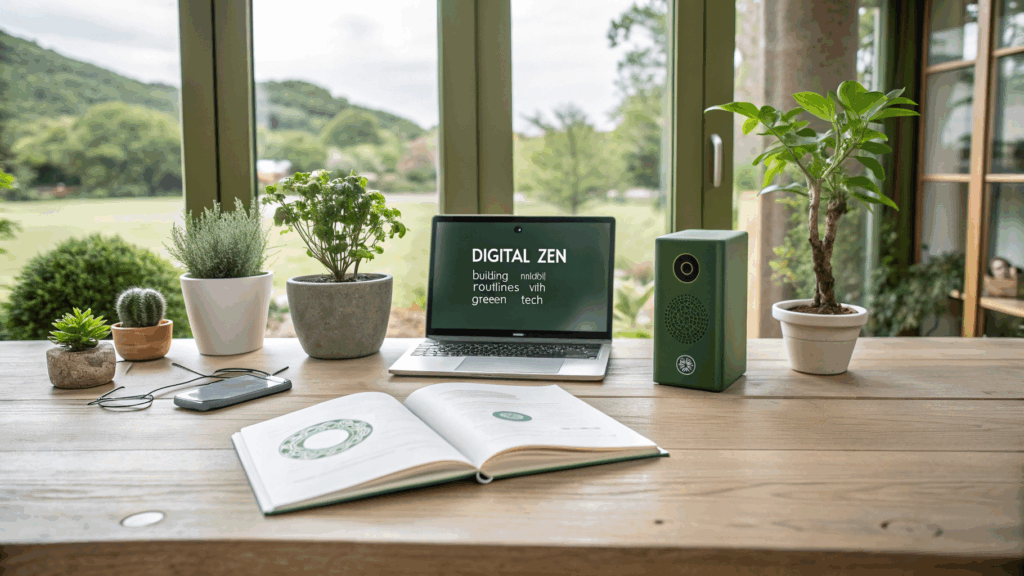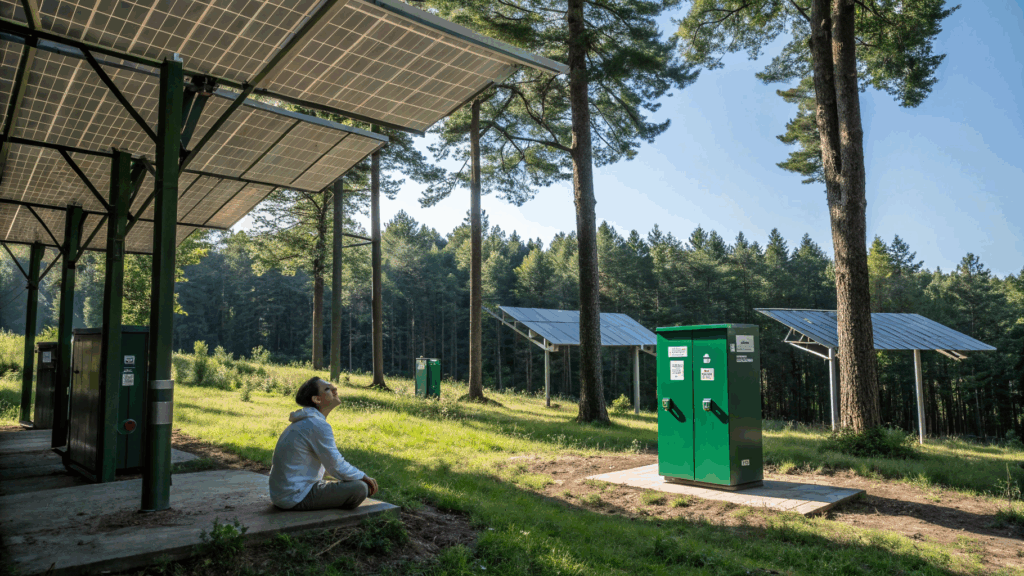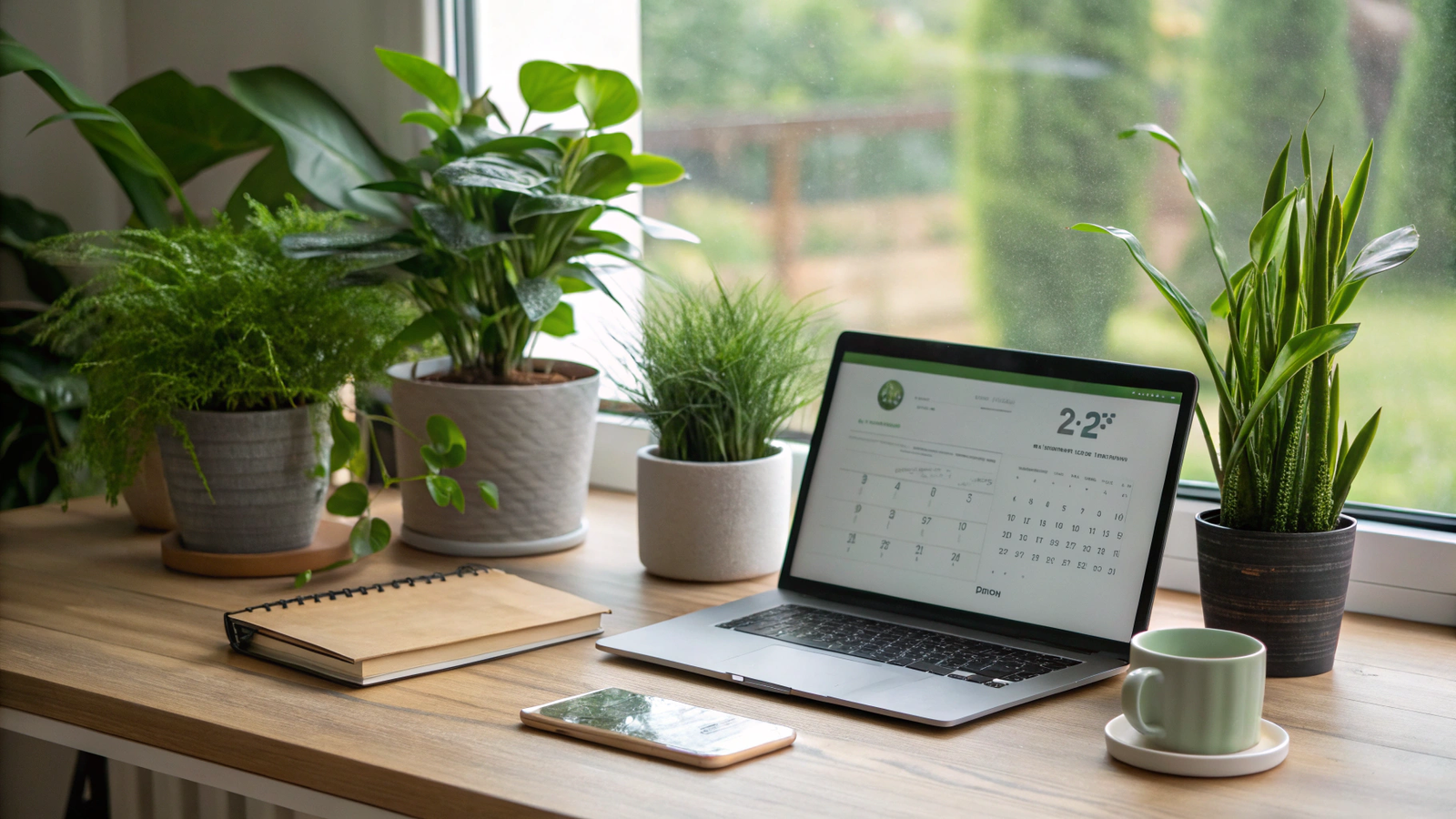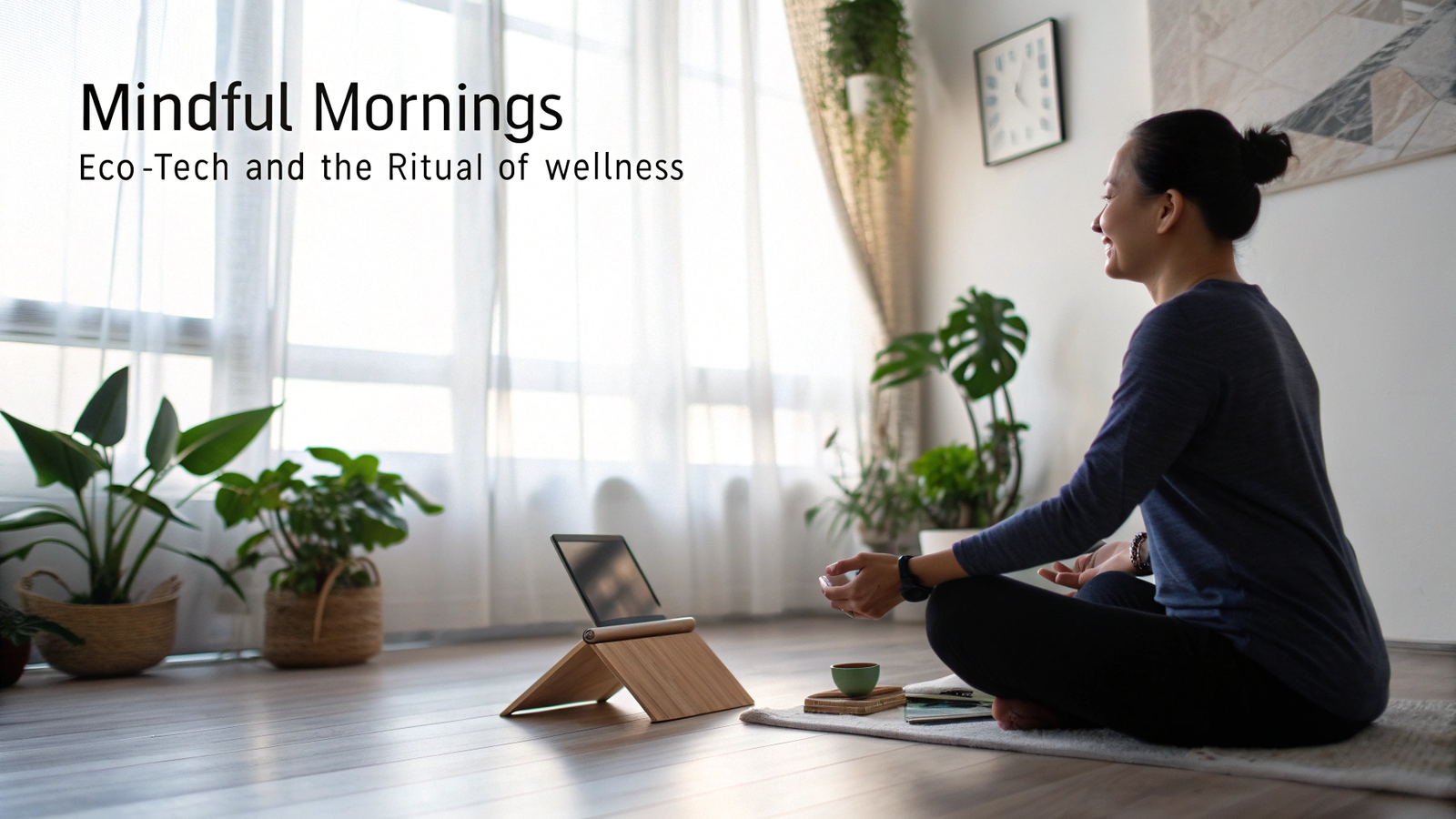Digital Zen: Building Mindful Routines with Green Tech
Introduction
In an age of relentless digital connectivity, it’s easy to feel tethered to screens, notifications, and ever-humming devices. Yet, technology can also serve as a bridge toward calm, centered living—when we adopt mindful design and intentionally integrate green tech into our routines. Digital Zen marries mindfulness with sustainability: minimal tech use, cleaner energy, eco-friendly digital tools, and mindful transitions that nurture both our mental well-being and the planet.
This article explores how to cultivate mindful tech-based rituals grounded in eco-conscious choices—from morning light exposure to evening digital detox—transforming everyday habits into restorative practices.

1. The Case for Mindful, Green Tech Use
Balancing Connection and Well-Being
Excessive device use impacts mental health, sleep quality, and stress. Smartphones and apps consume energy behind the scenes—from streaming to servers, contributing nearly 4% of global carbon emissions and subtly increasing our environmental footprint DeTEAPOTThe Green Muse.
Digital wellness doesn’t require abandoning technology—but reimagining its role: tools for focus, mindfulness, creativity—and not constant distraction.
2. Establish Mindful Digital Routines
Digital Boundaries and Intentional Use
Begin with habits like setting screen-free times (especially in morning and evening), disabling non-essential notifications, and using digital minimalism to trim clutter and noise calmeco.org+1Wikipedia+1.
Mindful Transitions
Use brief pauses between tasks—maybe a breath, a stretch, or stepping outside—to reset mental focus. These mindful transitions reduce digital fatigue and prepare you for intentionally stepping into the next activity digitalzenlife.com.
3. Eco-Meditation & Green Tech Synergy
Practice Eco-Meditation
EcoMeditation blends mindfulness, heart coherence, breathwork, and nature-based imagery—and it works, even for novices. Studies show improvements in anxiety, depression, pain, and long-term emotional balance through these practices PMC+1PMC+1.
Integrate short sessions—perhaps upon waking or during a work break—to anchor your day in calm, eco-centered presence.
Combine with Green Rituals
Pair your meditation with grounding eco practices—like deep breathing outdoors, journaling about a gratitude moment in nature, or simply syncing breath to natural airflow. These connect digital zen with environmental awareness chloroville.com.

4. Green Tech Tools to Support Mindfulness
Offline-First, Lightweight Apps
Mindful apps like Headspace, Insight Timer, Calm—and offline-friendly tools—help reduce screen time and lower server load (and thus energy usage) The Green Muse+5Wikipedia+5EcoHealthWay+5.
Use features like downloaded content, airplane mode meditation, or minimalist displays to ensure low digital impact.
Wearables for Breathing, Posture & Presence
Devices like Spire (breath trackers), Being, or Prana map heart rate variability and breathing patterns—gently reminding you to pause, breathe, and reset Wikipedia+4The Green Muse+4DeTEAPOT+4Wikipedia+1WIRED+1.
These tools can anchor awareness within your body, even as you move through your day.
Zen Hardware: Reduce Distraction
Consider items like the ReMarkable tablet—a distraction-free writing device with minimal power need—or a lockable signal-blocking pouch to enforce mindful breaks WIRED.
Blue‑light blocking glasses can also support circadian rhythm health when winding down before bed.
5. Mindful Morning & Evening Rituals
Morning Light & Nature Connection
Start your day by welcoming natural light rather than switching on bright artificial bulbs. Opening curtains, positioning your bed near a window, or spending minutes breathing outdoors can elevate mood, reinforce circadian rhythms, and reduce power use WIREDchloroville.com.
Combining this with short eco-meditation—focusing on breath, nature, and gratitude—creates mindful momentum into the day.
Evening Rituals Before Screens
Wind-down routines might use dimmed lights, breathable fabrics, and deep breathing rather than screens. Incorporating digital detox zones—like removing phones from the bedroom or placing them in lockable pouches—supports restful sleep and lowers exposure to tech-triggered stimulation Aura.
Simple journaling on paper or using a minimalist tablet can help reflect on the day mindfully without distraction.
6. Mindful Midday Moments with Tech Awareness
Pause Practices During Work
Incorporate micro-breaks: every 60‑90 minutes, step away from the screen for a moment—close your eyes, breathe, and scan your environment. These mindful pauses reset stress response, refresh focus, and reinforce presence EcoHealthWayReality Pathing.

Breathing Apps & Micro-Mediation
Use apps or wearables to cue breathing exercises—e.g., box breathing—or eco-meditation prompts. Even 2–3 minute guided sessions mid-afternoon can sustain awareness and reduce cumulative stress.
7. Reduce Your Digital Carbon Footprint
Limit Data-Hungry Habits
Streaming video and cloud backups consume significant energy. Reduce video resolution, delete unused software/data, and opt for offline modes. You cut both your digital carbon footprint and cognitive clutter DeTEAPOT.
Longer-Lived Devices & Green Computing Habits
Green computing encourages maximizing device lifespan, upgrading modular parts instead of replacing entire devices, and recycling responsibly chloroville.com+3Wikipedia+3calmeco.org+3. Careful power management—like choosing OLED or dark modes, enabling sleep settings, and undervolting hardware—also reduces energy draw.
8. Deepening Digital Zen Through Green Practice
Digital Detox in Nature
Schedule regular nature-based digital detoxes: go for tech-free walks, forest bathing (120 minutes/week recommended), or meditation in green spaces. These experiences offer restorative benefits and lower your implicit digital reliance Wikipediaverywellmind.com+1Wikipedia+1.
Eco Journaling & Gratitude
Record a few daily gratitudes—preferably in a compostable notebook or paper journal—not only strengthens presence but supports sustainable habits EcoHealthWayReality Pathing.
9. Reflecting on Potential Limits

Mindful Use vs Over-Reliance on Apps
Critics—including former Google CEO Eric Schmidt—argue that meditation apps can’t replace genuine focus. He suggests that turning off notifications and stepping away from devices may be more effective than app-led guidance The Times of India.
Balance app use with offline practice and ensure your tech is used to support—not replace your presence.
Environmental Tradeoffs of Tech Use
Even mindfulness apps rely on cloud servers and data centers. Minimizing usage, preferring lightweight apps, and downloading content for offline use helps reduce the environmental toll of digital wellness DeTEAPOT.
10. Toward Daily Digital Zen: A Routine Blueprint
Here’s a sample mindful routine incorporating eco-tech and presence:
| Time | Ritual |
|---|---|
| Morning | Wake with natural light / solar alarm → 5‑min EcoMeditation in nature |
| Mid-morning | Work with breaks every 60 min: breathe, stretch, pause, hydrate |
| Midday | Lunch without devices → gratitude journaling in paper notebook |
| Afternoon | Use breathing reminders via wearable → minimize screen time |
| Evening | Dim lights — no screens 60 mins before bed → sunset breathing practice |
| Weekly | Tech-free walk in nature → forest bathing or offline journaling |
Over time, these practices cultivate a grounded, balanced rhythm—where tech supports presence and sustainability, not distraction.
Conclusion
Digital Zen isn’t about silencing your devices—it’s about orchestrating them in service of mindful, sustainable living. Thoughtful routines—grounded in nature, intentional digital use, eco-conscious tools, and simple pauses—can transform the way we engage with technology.
By aligning mindful presence with green tech habits, we reclaim spaciousness in a noisy digital world—and breathe more deeply in harmony with both ourselves and the planet.

